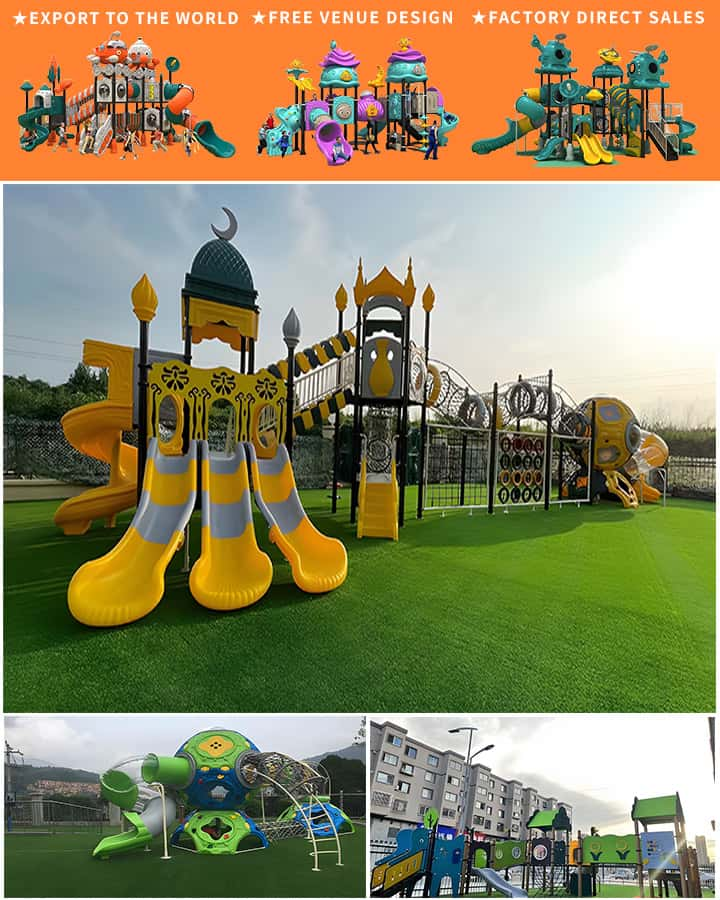Outdoor playgrounds are magical places where children can explore, learn, and grow through play. These vibrant spaces offer a myriad of benefits for kids, from physical development to social skills enhancement. If you’re planning to build or revamp a playground, here’s an essential guide to ensure that it is safe, fun, and engaging for children of all ages.
The Importance of Outdoor Play
Outdoor play is crucial for the healthy development of children. It allows them to engage in physical activities that promote fitness and coordination. Climbing, running, and jumping not only improve motor skills but also strengthen muscles and bones. Moreover, outdoor play encourages imaginative and creative thinking, as children often invent games and scenarios during their time at the playground.
Essential Playground Equipment
Slides: A classic piece of equipment, slides come in various shapes and sizes. They help develop balance and coordination while providing thrilling experiences for children.
Swings: Swings are excellent for building upper body strength and improving balance. They also offer a gentle yet exciting way for kids to soar through the air.
Climbers and Jungle Gyms: These structures challenge children’s climbing abilities and boost their confidence as they navigate different levels and obstacles.
Sandpits: Sandpits provide tactile experiences that stimulate sensory development. Playing with sand can enhance fine motor skills and creativity.
Seesaws: Seesaws teach balance and cooperation as children work together to make it go up and down.

Safety First
Safety is paramount in any playground. Here are some key safety tips:
Surfacing Material: Use impact-absorbing materials like rubber mats or wood chips to cushion falls.
Supervision: Always have adults supervise young children to prevent accidents.
Equipment Maintenance: Regularly inspect and maintain all playground equipment to ensure it is in good condition. Repair or replace any broken parts immediately.
Age-Appropriate Design: Ensure the playground is suitable for the age group it is intended for. This includes the height of slides, the size of swings, and the complexity of climbers.
Inclusive Playgrounds
In recent years, there has been a growing emphasis on creating inclusive playgrounds that cater to children of all abilities. Features such as wheelchair-accessible paths, sensory play areas, and adaptive swings make it possible for every child to enjoy and benefit from outdoor play.
Environmental Considerations
When designing an outdoor playground, consider its environmental impact. Use sustainable materials and incorporate natural elements like trees, shrubs, and water features to create a harmonious environment. Shaded areas can provide relief from the sun and add a touch of tranquility to the playground.
Community Engagement
Involve the community in the planning and development of the playground. Gather input from parents, teachers, and even the children who will be using the space. Community involvement ensures that the playground meets the needs and desires of its users and fosters a sense of ownership and pride.
Conclusion
An outdoor kids’ playground is more than just a place to play; it is a vital space for physical health, social interaction, and cognitive development. By focusing on safety, inclusivity, and sustainability, we can create playgrounds that offer joyful and enriching experiences for children today and for generations to come. So, let’s continue to invest in these incredible spaces and watch our children thrive in the great outdoors.




